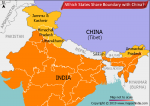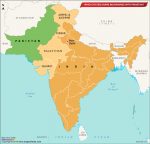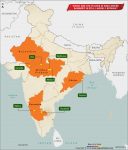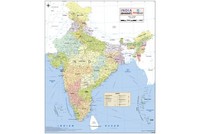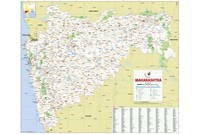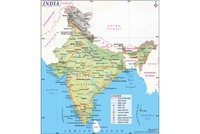One of cricket’s greatest all-rounders who led the Indian team to a historic World Cup triumph in 1983 and spearheaded the country’s pace attack for over 15 years, Kapil Dev Ramlal Nikhanj was born in Chandigarh on January 6, 1959.
His parents Ram Lal Nikhanj and Raj Kumari were Partition migrants from Pakistan.
A right-arm pace bowler, Kapil made his debut for Haryana at the age of 16, taking six wickets and helping his team to victory against Punjab. In the 1976-77 season, his eight-wicket haul helped Haryana beat Jammu & Kashmir. Then in the pre-quarterfinals he clamed 7/20 in 9 overs against Bengal in the second innings. His other impressive performances included 8/38 against the Services. He was selected for the Duleep Trophy, Irani Trophy and Wills Trophy.
Kapil showed his skill with the bat as well, cracking two half-centuries in the group stage matches during the 1978–79 season. He scored a 62 in an Irani Trophy match; and when his first innings figures for the Duleep Trophy final read 7/65 in 24 overs, the Indain cricket establishment realised here was something special.
In his debut Test series he troubled Pakistani players with his speed and bounce, and smashed a 50 off 33 balls. He scored his maiden Test ton against the West Indies at Delhi’s Feroz Shah Kotla stadium. In the following overseas series against England he picked up 16 wickets but had a poor batting average.
He didn’t stand out with either the ball or bat in the 1979 World Cup.
He, however, cemented his reputation as India’s best bowler and a batsman to reckon with in two home series, capturing 28 wickets in a Test series against Australia and leading India to two wins against Pakistan. His 11-wicket haul (4 for 90, 7 for 56) and 84 off 98 balls at Chepauk, Chennai was one of the greatest performances of his Test career, and helped India to a series win against Pakistan. When India toured Australiai n 1980–81, Kapil despite nursing an injury won the match for India by grabbing five wickets, also ranked one of his best performances.
After India’s disastrous tour of Pakistan in the 1982-83 season, Kapil replaced Sunil Gavaskar as the Indian captain. Kapil led Indiai n the 1983 World Cup in England.
Facing Zimbabwe at Nevill Ground in a crucial World Cup match,India elected to bat after winning the toss, but were soon reeling at 17/5. In partnership with lower order batsmen, Kapil then played one of the greatest One Day knocks of all time, which saw him forge an unbeaten 126-run stand for the 9th wicket. Kapil ended with an astonishing and match-winning 175 runs off 138 balls, an innings that went unrecorded as the BBC crew were on strike that day.
Gavaskar later wrote in his book ‘Idols’: “Kapil led by example in the game against Zimbabwe when five Indian wickets had gone for 17 runs to a mixture of good bowling and poor strokes. Kapil went out and played an innings that is truly unforgettable. His first 70 to 80 runs were really calculated in the sense that he pushed and nudged the ball. And he only hit those, which he was convinced should be hit. After that he had enough confidence and when he saw that he had partners who would stay with him he launched a counter attack the like of which one had never seen before. It was absolutely unbelievable stuff.”
Twenty-five years later Kapil said about his innings: “Against,Zimbabwe, izzat ka khyal thha, aur kuchh nahin thha! [It was just a matter of pride, nothing else] I was only worried about our honour. Some days are made for you — that day was made for me.”
India went on to face the mighty West Indies in the World Cup finals.
India were restricted to 183 runs, and it looked as if it would be an easy target for the West Indies, winners of the last two World Cups. At 57/2 the Windies were on course, with Viv Richards in form. And then Richards sent a gusty bouncer by Madan Lal to the skies. Describing what happened next, the cricket historian and writer Gideon Haigh wrote in espncricinfo.com in May 2009: “In the event Richards miscued, but the ball would have fallen safe had any other fielder been stationed near the drop zone. As it was, Kapil Dev turned, ran back with the flight of the ball, loose stride eating up the distance, cast a split-second glance over his shoulder, and collected the descending ball in his fingertips — making even this look deliberate. Has a more difficult catch been made to seem easier at a more critical moment in the annals of the game?”
Kapil’s catch proved to be the turning point in the match and West Indian wickets started tumbling. They were eventually bowled out for 140 and India lifted the Cup.
Though experts believe that Kapil’s greatest phase as fast bowler lasted till 1983-84, he led India’s pace attack for another 10 years. He captained the squad in the 1987 World Cup in which India lost the semi-final to England. During the 1991–92 Australia series he became the second bowler in history to take 400 Test wickets. Before retiring in 1994 Kapil crossed Richard Hadlee’s record (at that time) for the most Test wickets taken.
Summing up the Kapil Dev phenomena, cricket commentator Charu Sharma wrote in Outlook magazine in July 2002: “Kapil Dev’s impact on Indian cricket was much greater than the sum total of his record statistics. He represented hope and inspiration. Whenever he was inside the arena, millions of Indians dared to dream…His uncomplicated performances and, indeed, personality were instrumental in instilling belief inside the hearts of the aspiring millions.”
Also on this day:
1847 —Tyāgarājar, one of the greatest composers of Carnatic music, passed away
1928 — Vijay Tendulkar, Marathi playwright, was born
1966 — A.R. Rahman, Indian composer and musician, was born
1971 — Madhu Koda, chief minister of Jharkhand, was born
1971 — P.C. Sorcar, famous Indian magician, passed away

